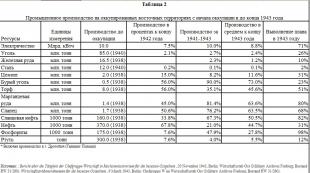Presentation on the topic “Social, psychological and speech norms of communication. Social norms Well-delivered speech
The concept of social role
The social role is the expected behavior associated with a certain social status and function of a person in the social division of labor.
The social role fixes for the person and those around him the tasks and responsibilities associated with the status, thereby ensuring the predictability of social behavior.
The performance of the role represents itself, that is, the role. The role demonstrates the institutional conditioning of behavior, that is, the connection with other roles.
Roles and statuses
Roles and statuses can be divided into:
Ascriptive (prescribed by nature, i.e. determined by birth, gender, status, class)
Achievable, i.e. acquired by personal efforts, for example, professional roles in modern society
Social roles are acquired in the process of socialization. The roles associated with everyday communication in a social group are mastered in the process of primary socialization. Professional roles - in the process of secondary socialization (3-5 years).
Role conflict occurs when:
The same person is expected to play different roles at the same time. Conflict resolution strategy: combination of roles;
When conflicting expectations are presented to behavior in a role by different groups. A strategy for resolving such a conflict: segmentation of roles over time.
Role Theories
1. The founder of the theory of social role - the American sociologist R. Linton (1936) attributed to role behavior the regular reproduction of a certain stereotype of behavior in situations of social interaction. He singled out statuses in interaction and associated roles with them as a dynamic aspect of status. According to Linton, a social role is "a set of cultural patterns that are associated with a particular position and do not depend on a particular person." He wrote in 1945 that "a social system is preserved if the individuals who occupy limited positions in it can walk, move around."
2. Sigmund Freud, in the theory of lost objects (objects of pleasure - cathexis), explained the assimilation of the roles of the Other through the efforts of the individual to maintain in his fantasy an attitude that brings pleasure.
3.According to Parsons, the child acquires a primary understanding of the role structure of society through attempts to solve problems, thereby establishing connections between the individual and the social system in early childhood. The function of social roles is the normative integration of society.
4. Representatives of symbolic interactionism (J. Mead, G. Bloomer) and their followers (Berger and Luckman, I. Hoffman), in contrast to structural functionalism, emphasize the social constructivism of role behavior.
Normative regulators of behavior
social norms
Social norms are called universal prescriptions regarding the behavior of people, which are directly or indirectly focused on the system of cultural values and their implementation in social life. Norms determine human behavior in Everyday life setting its boundaries. Behavior that goes beyond the norms is deviant.
Norms form an interconnected system, they are not contradictory. The function of social norms is the coordination of behavioral expectations in the social interaction of people.
Norms have general validity, but they are associated with social status (it is impossible to follow the norm of caring for children without having them).
Traditions
Traditions are historically formed non-reflective behavioral complexes that are of great importance for the preservation of society due to their historical significance. Transmitted from generation to generation and preserved in society, social groups for a long time. Violation of tradition entails moral condemnation.
habits
A habit is an individual automatic action, the details and meaning of which are not recognized (quasi-automatism, for example, when opening a lock). A habit can take on the character of a need. However, people are guided by the habits of other people in social interaction. Breaking habits does not entail sanctions.
Habits that have spread in a social group are called customs. The transition from custom to norm is fuzzy. For violation of customs, explanations may be required. Frequent deviation from customs gives rise to distrust of a person.
Customs and customs are closely related terms. The difference is that mores refer to moral customs. For example, there is a moral norm not to abuse alcoholic beverages. The use of such drinks is not punished, only indecent behavior based on drunkenness is condemned. However, if a person constantly drinks, then the neighbors condemn him, even if he behaves calmly.
Long term interests
According to M. Weber, a person, especially in the field of economic behavior, realizes that certain behavior best suits his interests. In the case of rational behavior in the sphere of economics, behavior acquires a "uniformity, regularity, and duration of attitude and behavior," conceived stronger than norm-oriented behavior.
Fashion is also a regulator of normative-like behavior. For example, if 90% of students wear thick-soled shoes, then an individual student most likely does not want to belong to the remaining 10%.
The concept of social control
In order to ensure not only knowledge of the norms, but also normative behavior, society has a system of social control.
Social control is a set of means of influence of society on a person to ensure behavior that corresponds to role expectations.
Social control is carried out on a formal (laws) and informal (morality, ethics) basis.
Structure of social control
Role expectations
Behavioral prescriptions
Normative role behavior/actual role behavior
Sanctions: rewards and punishments
Pronunciation norms regulate the choice of acoustic variants of a phoneme or alternating phonemes. Stress norms govern the choice of placement and movement options for each stressed syllable among unstressed ones. The mobility and diversity of Russian stress make it difficult to master, especially for people who learn Russian as a foreign language. Morphological norms regulate the choice of variants of the morphological form of the word and the ways of its coupling with others. Syntactic norms determine the correct construction of sentences - simple and complex. Lexical norms regulate the choice of words and their meanings, characteristic and suitable for a given speech act. This choice is explained, first of all, by the expediency of using this or that word in any of its meanings. Stylistic norms regulate the compliance of the selected word or syntactic construction with the conditions of communication and the prevailing style of presentation. Here, too, they are guided not just by accepted norms, but by expediency in speech communication. To comply with stylistic norms, it is not enough just to know them, you need “taste” and “talent” to be able to apply them.
To use the preview of presentations, create a Google account (account) and sign in: https://accounts.google.com
Slides captions:
Social, psychological and speech norms of communication GBOU SO SPO "Volsk Pedagogical College named after F. I. Panferov The work was performed by a student of group 2N Karimova Ravilya Davlyatovna 2013
1. Speech norms Before talking about speech norms, it is necessary to introduce the concept of speech correctness. The correctness of speech is the correspondence of its linguistic structure to the current language norms. The correctness of speech ensures mutual understanding between native speakers of any language, and also forms the unity of speech. Let's start with the concept of a language norm.
The language norm is “a set of the most stable, traditional implementations of the elements of the linguistic structure, selected and fixed by public language practice.” In addition to the norm, there are other regulators of speech behavior: accuracy, consistency, purity, expressiveness, richness (diversity), relevance of speech. However, the norm is the fundamental regulator of speech activity.
There are several structural-linguistic types of norms: Pronunciation norms regulate the choice of acoustic variants of a phoneme or alternating phonemes. Stress norms govern the choice of placement and movement options for each stressed syllable among unstressed ones. The mobility and diversity of Russian stress make it difficult to master, especially for people who learn Russian as a foreign language. Morphological norms regulate the choice of variants of the morphological form of the word and the ways of its coupling with others. Syntactic norms determine the correct construction of sentences - simple and complex. Lexical norms regulate the choice of words and their meanings, characteristic and suitable for a given speech act. This choice is explained, first of all, by the expediency of using this or that word in any of its meanings. Stylistic norms regulate the compliance of the selected word or syntactic construction with the conditions of communication and the prevailing style of presentation. Here, too, they are guided not just by accepted norms, but by expediency in speech communication. To comply with stylistic norms, it is not enough just to know them, you need “taste” and “talent” to be able to apply them.
2. Social norms of communication Human communication in any country necessarily takes place in conditions of social control, therefore, it is subject to certain norms and rules established in this society. Society develops, as social norms, a specific system of patterns of behavior that it accepts, approves, cultivates and expects from everyone in the appropriate situation. Their violation includes mechanisms of social control (disapproval, condemnation, punishment), which ensures the correction of behavior that deviates from the norm.
Etiquette as the core of a culture of communication, a model of communicative behavior Modern speech etiquette has become simpler and more democratic, as the division into classes has become less obvious, but the norms of communication have not become less certain from this. Almost all of our lives are meetings and communication with many people. And the mood, the relationship with people, and the results of our work depend on how these meetings proceed. In the broad sense of the word, speech etiquette characterizes almost any successful act of communication. Therefore, speech etiquette is associated with the so-called postulates of speech communication, which make the interaction of communication participants possible and successful. Speech etiquette, in particular, includes words and expressions used by people to say goodbye, requests, apologies, forms of address adopted in various situations, intonation features that characterize polite speech, etc. For the culture of each country, speech etiquette is individual.
Speech etiquette is a means of achieving a communicative goal In modern, especially urban culture, the culture of industrial and post-industrial society, the place of speech etiquette is being radically rethought. On the one hand, they are eroded traditional foundations this phenomenon: mythological and religious beliefs, ideas about an unshakable social hierarchy, etc. Speech etiquette is now considered in a purely pragmatic aspect, as a means of achieving a communicative goal: to attract the attention of the interlocutor, to show him respect, to arouse sympathy, to create a comfortable climate for communication. Relics of hierarchical representations are also subject to these tasks; compare, for example, the history of the address "Master" and the corresponding addresses in other languages: an element of speech etiquette, which once arose as a sign of the addressee's status, subsequently becomes a nationwide form of polite address.
3. Psychological norms of communication Interaction between people requires numerous forms of non-verbal communication - the exchange of information through changes in facial expressions, gestures and body movements. Non-verbal communication is sometimes also called "sign language", but this term is not entirely correct, since we, as a rule, use such non-verbal signs only to refute or supplement what is said in words. Some evidence suggests that in the process of human interaction, only 20-40% of information is transmitted through speech, i.e. communication is largely carried out through gestures, facial expressions, movements, postures, etc., which accompany a person’s speech and make it more expressive. Non-verbal communications are very significant, so communication etiquette is based primarily on them.
Body language and intuition According to research, a significant part of the speech information in the exchange is perceived through the language of postures and gestures and the sound of the voice. 55% of messages are perceived through facial expressions, postures and gestures, and 38% through intonations and voice modulations. It follows that only 7% is left to the words perceived by the recipient when we speak. This is of fundamental importance. In other words, in many cases, how we speak is more important than the words we say. When we say that a person is sensitive and intuitive, we mean that he (or she) has the ability to read another person's nonverbal cues and compare those cues to verbal cues. In other words, when we say that we have a premonition, or that our “sixth sense” tells us that someone has told a lie, we really mean that we have noticed a discrepancy between the body language and the words spoken by this person.
Conclusion: Given all of the above, we can give the following definition of a norm: a norm is a historically accepted choice of one of the functional and syntagmatic variants of a linguistic sign in a given language community. The correctness of speech and the observance of speech etiquette are the key to understanding the interlocutor and his positive attitude towards you. Joint activities and communication proceed under conditions of social control, carried out on the basis of social norms - patterns of behavior accepted in society that regulate the interaction and relationships of people.
Joint activities and communication proceed under conditions of social control, carried out on the basis of social norms - patterns of behavior accepted in society that regulate the interaction and relationships of people.
Society develops, as social norms, a specific system of patterns of behavior that it accepts, approves, cultivates and expects from everyone in the appropriate situation. Their violation includes mechanisms of social control (disapproval, condemnation, punishment), which ensures the correction of behavior that deviates from the norm. The existence and acceptance of norms is evidenced by the unambiguous response of others to an act of someone that differs from the behavior of everyone else.
The range of social norms is extremely wide - from patterns of behavior that meet the requirements of labor discipline, military duty and patriotism, to the rules of politeness. The behavior corresponding to the social norm also includes the maximum return in work and the implementation of the rule just learned by the first grader to get up from the desk when the teacher appears in the class.
The appeal of people to social norms makes them responsible for their behavior, allows them to regulate actions and deeds, evaluating them as corresponding or not corresponding to these norms. Orientation to norms allows a person to correlate the forms of his behavior with standards, to select the necessary, socially approved and unacceptable ones, to direct and regulate his relations with other people. Assimilated norms are used by people as criteria by which their own and other people's behavior is compared.
The close connection of emotions and feelings was the basis of the information concept of emotions formulated by P.V. Simonov.
The essence of this concept is that a person, consciously or unconsciously, compares information about what is required to satisfy a need with what he has at the time of its occurrence.
If the subjective probability of satisfaction of the need is high, positive feelings appear. Negative emotions are generated to a greater or lesser extent by the real or imagined impossibility of satisfying the need realized by the subject. The informational concept of emotions has undoubted evidence, although it does not cover the entire diverse and rich emotional sphere of the personality by explanation. Not all emotions by their origin fit into this scheme.
Like all mental processes, emotional states, experiences of feelings are closely related to brain activity and physiological reactions. It is physiological reactions that can be measured and evaluated: increased heart rate, sweating, galvanic skin response, etc. However, this relationship is very complex and ambiguous. Exactly the same physiological manifestations can be the result of a variety of emotions, such as strong fear or violent joy.
The theoretical and experimental development of the problems of the conditionality of mental processes, functions, states, as well as the specifics of mental activity in a situation of communication, enriched psychology with many fundamentally new and important data, which made it possible, in particular, to raise the question of the need to revise the provisions regarding the essence and nature of qualitative transformations of mental spheres of a person, about the factors that determine the formation of higher mental functions, etc. If it was previously assumed that the psyche is formed primarily on the basis of objective activity, and the formation of higher functions is determined mainly by the use of sign-means and speech, then now it becomes obvious that for a person the initial situation is communication and in the development of the psyche a decisive role should be assigned to communication and interaction between people.
However, it is precisely the data that have already been obtained by psychology in this area that, it seems to us, show the need for further clarification of the problem and the rejection of some established ideas.
We see the specifics of mental processes in a situation of communication and the peculiarities of the psychological mechanisms of communication precisely in the involvement in communication of not abstracted mental functions or properties of a person, but of a holistic personality. With this approach, it is necessary to pay special attention to the most important manifestation of personality - will. We do not intend to undertake here a critical analysis of the attempts of traditional psychology to fit the phenomenon of volition into the accepted schemes of analysis, since we consider this question to be rhetorical. We only note that about such a phenomenon inner peace personalities, like "good will", traditional psychology not only could not report anything significant, but did not include it at all in the scope of its research, referring to the so-called content of the psyche, supposedly not subject to psychology. But it is obvious that when studying the processes
355
communication, as well as all spheres of human life, it is necessary not only to study the will, volition, but also to analyze the category of "good will", which cannot be dispensed with, at least when elucidating the mechanisms of personal communication. However, at present, psychologists are not sufficiently methodologically and methodically prepared to study such personal phenomena.
From our point of view, it is the attitude to the role of communication that makes it possible to identify essential features and patterns, specific processes and functions. As an example, consider the phenomena expectations, expectations and volition.
As far as we know, correlation in a single series and in the general connection of phenomena expectations, expectations and volition not previously carried out. The ability for anticipation as a fundamental property of the psyche has not been given due attention in psychology for a long time 1 . Nevertheless, it is known that it is thanks to the possibility of anticipation, forecasting, foresight, anticipation of events, acceptance of the future result of activity, expectancy and other phenomena correlated with this ability, that the most important function of the mental is realized - regulatory.
Great importance To understand these phenomena, studies of the action acceptor (P. K. Anokhin), attitudes (D. N. Uznadze), activity and probabilistic forecasting (N. A. Bernshtein), anticipatory schemes (S. G. Gellershtein), confidence (A. S. Prangishvili), etc. No less important are the studies of states of expectation, conducted, in particular, by foreign psychologists in line with engineering psychology, and even some provisions of the theory of “operant conditioning” and “anticipatory reinforcement” by B. F. Skinner. However, and this seems very symptomatic to us, even the recent special works in this area add little to the understanding of the nature and mechanisms of anticipation proper.
"At present, the situation is changing. We note, in particular, the work: Lomov B. F., Surkov E. N. Anticipation in the structure of activity. - M.: Nauka, 1980.
356 _______________
Social psychology, which often refers to the phenomena of expectation, in particular to role expectations, also does not reveal their psychological mechanisms and does not trace the connection between phenomena of a socio-psychological order with the general psychological laws of these processes. And in any case, neither in psychophysiology and general psychology, there are no works in social psychology in which anticipation and expectation were placed in some relation to the phenomena of volition. At one time, when analyzing the significance of engineering psychology data for the theoretical and methodological foundations of psychology in general, we considered a number of mechanisms for the processes of expectation and the state of expectation that occurs in a person in a complex stochastic situation in laboratory and natural conditions. Of particular importance are the phenomena of the so-called subjective probability. Various aberrations in determining the probability of occurrence of events by a person, reduced or increased accuracy of probabilistic forecasting, a kind of deviation of human behavior from the laws of mathematical and machine forecasting, etc. show quite clearly that human expectation processes are very specific. In the vast literature devoted to the study of subjective probability and expectation, one can find data that cannot be fully explained even within the framework of the concept of expectation accepted by most psychologists. We note just one example. In the work of A. G. Asmolov, data from the study of Solley and Haig are given. During the pre-Christmas period, children were asked to draw Site-Klaus. The closer the holiday was, the more space on the card was occupied by Saita-Klaus, the more his bag with gifts swelled. Sollei and Haig, followed by Asmolov, evaluate the data in accordance with the accepted notion that “people often overestimate desirable events and underestimate the likelihood of unpleasant ones,” and the image “transforms under the influence of motivated expectation.” Similar "transformations" and "deviations", as we have already noted, were actually established as a regularity under similar conditions in large numbers works (including field research). We tend to see in these data
M. I. Bobneva. Norms of communication and the inner world of the individual357
manifestation of more complex patterns of the inner world of the individual.
If we consider the non-abstracted ability of a person to probabilistic forecasting and not reduce it only to the work of the brain, but study the behavior of a person endowed with a complex inner world, then the phenomena of expectation should not be separated and even opposed to knowledge. In the above example, the “image” of Site-Klaus does not by itself “transform under the influence of motivated expectation”, it changes will child, his volitional desire to bring the holiday closer, to accelerate the onset of the desired event, to make it real, that is, directly influence on him. Such a manifestation of volition is observed practically in all cases"significant expectation" - when waiting for the onset of a desired and significant event or in an effort to delay, eliminate the undesirable.
We are not inclined to see in such acts of volition in a situation of expectation the manifestation of some rudiments of a "magic" consciousness or a "magic" stage in the development of the psyche, just as J. Cohen and M. Hansel believed in relation to some aberrations of subjective probabilities. We believe that in these cases we directly come to the facts of the conditionality of mental processes, properties and states by social factors - communication and its norms. To clarify this point, consider some examples.
When we buy a lottery ticket, we actively want our number to win. But hardly anyone will seek to influence the rotation of the drum with balls. However, it is quite easy to identify people who express "mentally" or jokingly wishes to the persons pulling out the balls, "pull out the desired number." It is hardly necessary to experimentally test the hypothesis 6 that knowledge in relation to cal object - the desire to "force" him to obey our will, to act according to our desire - is incomparably less common than the will in in relation to a person participating - albeit in the role of a "tool" - in the implementation of even the known to the driver mathematical regularity the occurrence of a probabilistic event. And if in the first case such a will of a person will be appreciated by the majority of people
358 Section VI. Psychology of communication
most likely as anomalous, the second seems almost typical. It can be assumed that the collective and individual experience of behavior and action in a social environment, and above all the experience of direct contacts, forms in a person certain knowledge, skills of actively influencing the environment, the ability to manifest and impose one's will, to organize events in this social environment in accordance with by his own will.
In a social environment, in communication, there is actually no place for passive and abstract expectation, the person is actively waiting, as a strong-willed and active being, capable of both manifesting will and (which is necessarily connected with the first) acting in accordance with the will of another person. The physical, objective world is unyielding for the direct volitional activity of a person, while the person himself and the people around him are able and inclined to constantly manifest volitional qualities and take into account the wills of others.
The decisive influence on the human psyche is not the experience of his objective activity, but precisely communication.
In the above-mentioned experiments of Solley and Haig and in similar studies, we are obviously dealing with a definition of situations in which volition is possible that children have not yet formed, and with the transfer of their already existing experience of communication with others to the conditions of the presented task.
The ability to anticipate, the processes of expectation and related phenomena are formed in a person not according to the laws of the physical, objective world, but under the influence of the characteristics of communication and interaction with the human environment, i.e. in direct connection with manifestations of will and will (and not only one’s own , but, more importantly, other persons opposing in communication). It is possible that in these acts of mutual volition and coordination of behavior and experiences with them, the existence of other personalities endowed with their own inner world is especially effectively manifested for the individual.
Under these conditions, a person learns the basic norm of personal communication - the need to transform the original ability to will into human "good will"
M. I. Bobneva. Norms of communication and the inner world of the individual 359
without which no personal communication is possible. It is essential that "good will" should be directed not only and not so much to another person =** partner in communication, but to the person who manifests the will itself. We believe that it is in the course of these complex transformations in the situation of communication that the ability to anticipation and expectation is formed and improved as a social ability that is realized in personal communication and then generalized by a person and used by him in all spheres of his activity.
These provisions seem to be very essential for understanding the nature and regularities as phenomena of social expectation, as well as social norms. All social norms (including those prohibiting) are prescriptive in nature. Obviously, in developing and using them, society and groups proceed from the fact (expect) that the prescriptions must and will be fulfilled. At the same time, it is impossible to imagine the use of prescriptive norms in relation to the phenomena of the physical, objective world or in relation to human beings, whose ability to anticipate-volition (at least to submit to will) is not taken into account. Of course, there is a biblical story about Joshua, who tried to stop the sun with his will, folk tales(for example, "By the Pike", etc.), in which the will in relation to natural objects is carried out not directly (which is typical for children), but through "supernatural" power. We admit that this is precisely the basis of some magical rites, "spells", etc. In all such phenomena, we see a mixture of natural, objective and human, an inability to isolate the "specifics of the human social environment.
It should be noted that, although the will, as a complex manifestation of a person, undoubtedly contains natural components (the volitional aspect of the instincts of life, procreation, etc.), nevertheless, this quality is not only intersubjective, but also social.
In the sphere of social behavior, the prescriptive nature of social norms is manifested primarily in probabilistic, obligatory and due expectations group (community,
360 Section VI. Psychology of communication
society) a certain type of behavior of one or another member of the group, usually role-playing behavior.
social, or role-playing, expectations in terms of their psychological nature and mechanisms, phenomena are undoubtedly of a different order than the states of expectation that form in a person in a situation determined by only one parameter (stochasticity). Social expectations are associated with the modal nature of a person's social behavior in a deontic situation. We should also emphasize such a characteristic of social expectations as their binding character. Different types of social expectation: probabilistic, obligatory and due - differ from each other in the degree of obligatoryness for a group member of the role prescribed to him and expected by the group in connection with these prescriptions of the behavior of the individual. But for all kinds of expectations, the form of behavior is predetermined, which means that the result is initially represented in "pending" subjects. When members of the group assimilate social expectations as norms, the result presented in the subject acting in accordance with these norms.
The described mechanism of behavior and interaction in the social environment is consistent with the above assumption that the phenomena of anticipation, although associated with the psychobiological capabilities of a living individual, for example, with extrapolation reflexes (S. V. Krushinsky), but in humans they are purely social in nature . The ability to anticipation in a person is formed under the influence of social factors and in the conditions of social, interpersonal interaction.
Obviously, the ability for complex forms of anticipation, anticipation, anticipation of events can develop only in an environment where the result can be displaced in relation to the action being carried out, in an environment more malleable than natural, in an environment where prescription is possible - dictate, where activity, its type and result can be predetermined for the subject. Such is precisely the social environment, and above all direct, contact communication. .
In the light of these general assumptions, the hypothesis of the initial acquisition of skills by the child seems plausible.
M. I. Bobneva. Norms of communication and the inner world of the individual361
and norms of behavior in the human environment, in their immediate environment, in communication and the subsequent transfer of these skills of experience and forms of activity into the sphere of interaction with the natural and objective environment. Here it is necessary to indicate that the subject environment is, in fact, a transformed form of the implementation of the structure and norms of communication, a transformed communication environment. The child is quite easily convinced from his own experience that the objective environment (at least the objective environment of his being) can in principle be organized by the people around him, rebuilt in accordance with their (and through them, his, the child) will and desire. Due to the peculiarities of his psyche, the child usually seeks to avoid indirect ways of achieving the goal (including influencing the objective environment through the human environment) and tries to influence it in a direct way, in an immediate way. Such a direct way in the structure of children's communication with adults is the expression of one's desire, leading.
It should be noted that at the later stages of personality development, the expression of desire and guidance are actually extremely rarely used as direct ways of influencing not only in the objective, and even more so in the natural, but also in the social environment. The mechanisms of indirect goal-setting, as well as communication with the help of hints, allegory, etc., are the most typical forms of influence that replace and eliminate direct expression of will.
No less significant are the processes of social influence. The child resorts to the usual way of communicating with people around him, trying to influence the time and content of upcoming events. Similar behavior of adults in ordinary stochastic situations, for example, in a lottery, etc., we are inclined to explain by a "decrease" in the level of regulation of behavior, "looseness" and similar subjective factors acting in these situations.
In connection with the above provisions, it is necessary to evaluate the origin, nature and content of certain forms and norms of communication from new positions. We consider the antipode of personal communication to be the attitude towards the person with whom we have established
362 Section VI. Psychology of communication
contact is made, as to an object, things, to an object devoid of an inner world, "non-personality". Between these extreme poles, numerous transitional forms of distorted personal communication can be placed; they are characterized by degree of decrease"objective" definitions of a person.
The norms that operate in all these types of distorted communication, except for the extreme in this series - personal, we consider secondary, that is, not due to the actual essence of communication, but generated by an unfavorable social environment, macrosocial factors that distort the true nature of a person and the social environment. The use of the norms of these distorted forms of communication has an extremely unfavorable effect on the formation of the inner world of all persons falling within their sphere of action. But the analysis of the mechanisms of action of such norms, the mechanisms of distorted communication, aberrations, deformations of the inner world of the individual in these conditions, is the task of independent work.
The above data show, in our opinion, that when posing the problem of communication as a purely psychological social factors and social environment should be given paramount importance, and this value should become dominant when the psychology of communication enters the applied aspects of the problem.
V. N. Panferov
CLASSIFICATION OF HUMAN FUNCTIONS AS A SUBJECT OF COMMUNICATION 1
In any act of social and labor interaction with his own kind, a person is simultaneously the subject of objective-practical activity, cognition and communication. It is logical to assume that each of these aspects of the manifestation of personality has some originality, which is reflected in its functional structure. 1 Psychological Journal. - 1987. - V. 8, No. 4. - S. 51-60.
363
This article is devoted to the study of human functions as a subject of communication.
The relevance of this problem is determined by the fact that numerous results of specific studies of the joint activities of people cannot be fully explained on the basis of the well-known concepts of the psychology of cognition and the psychology of work. They miss the most important moment. public life- the interaction of one person with another, studied mainly by social psychology. It should be emphasized that it is the socio-psychological factors that are mobilized to the maximum for the implementation of profound transformations in the country.
In this regard, the problem of communication comes to the fore in psychological science; special attention is paid to this issue of the functional characteristics of communication. Theoretical and experimental studies of this issue reveal a wide variety of communication functions, which indicates the multi-qualitative nature of this phenomenon and, at the same time, a certain logical disorder in its interpretation. Each researcher focuses on individual functions communication, leaving in most cases the question of their classification unanswered, which reduces the theoretical and methodological value of scientific developments of the problem of communication and makes their practical implementation difficult. In addition, the characterization of the main functions of communication is carried out primarily in isolation from the analysis of other functions of a person as a subject of interaction with other people in joint life. This leads to the loss of objectified classification grounds, which are contained in the properties of a person who performs functions in a joint subject-practical activity, as well as to a break in the organic unity of human activity and communication.
A productive development of the problem of classifying the functions of communication is contained in the works of BF Lomov. In them, according to his own assessment, an attempt was made to still incompletely classify some of the main functions of communication, in particular, two rows of functions were singled out for different reasons. The first includes three classes following functions:
364 Section VI. Psychology of communication
information-communicative, regulatory-communicative, affective-communicative; the second is determined by a different system of grounds and includes the organization of joint activities, people's knowledge of each other, the formation and development of interpersonal relationships.
However, the following questions remain open. First, are the series of functions exhausted in terms of their number? Secondly, how many such rows can there be? Thirdly, what are the grounds for classification? Fourth, how are the different foundations related?
If we assume that all functions of a person are his functions as a subject of mental activity, then on the first question we can say that emotive, conative and creative functions should also be included among the main functions of communication. They were considered in the works of B. G. Ananiev, L. S. Vygotsky, V. N. Myasishchev, although not always using these terms, since in their works these functions were touched upon in connection with the problem of the influence of communication on mental activity and mental development. personality in general. In our opinion, we can talk about six functions: communicative, informative, cognitive, emotive, conative, creative.
These functions as a whole and each separately received a more or less satisfactory theoretical explanation as a function of communication in the works of many psychologists, and were also the subject of experimental research both in Soviet and foreign psychology. As a result of consideration of these and some other studies of the subject of communication, the conclusion suggests itself that all these functions are transformed into one main function of communication. - regulator-nuyu, which manifests itself in the interaction of a person with other people. In this sense, communication is a mechanism for the socio-psychological regulation of people's behavior in their joint activities. The main six functions of a person do not lose their independent significance in the process of communication, and each of them can become dominant depending on the meaningful context of joint activity.
These functions should be considered as one of the bases for classifying all other human functions.
V. N. Panferov. Classification of human functions as a subject ... 365
century as a subject of communication. At the same time, it is important to note that the named functions in theoretical views were defined as the general functions of a person's mental activity, which are realized in the subject-object interaction of a person with objects of the natural and artificial environment. Since these functions also take place in the processes of human-human interaction, and. in the processes of human interaction with objects, insofar as they can be considered universal functions in the structure of a holistic act of joint activity.
In the first case, they act as the main functions of the subject of communication, aimed at the partner, his physical and psychological qualities, in order to regulate his interaction with him, taking into account his and his personal characteristics. In this sense, this aspect of interaction acquires the character socio-psychological activity, the peculiarity of which is the counter influence of partners on each other. In the second - as functions of the subject of objective activity, aimed at a material object, in order to regulate their actions in accordance with physical properties object. In this case, we can only talk about the level of mental regulation. Despite the qualitative differences between these aspects of interaction, interrelationships are established between them in the integral structure of joint activities in solving practical problems. Each of the aspects of interaction has a content correlated with the universal functions of joint activities related to social goals, where a person acts as a subject of social and labor activity. In this aspect, there are social features of the functional characteristics of a person.
Consequently, the answer to the second and third questions involves the definition of three more rows of functions in the structure of a person as a subject of communication. We should talk about the properties of a person that are included in the process of communication in the form of mental functions as a function of the brain, socio-psychological phenomena as a function of human relationships, social manifestations of a person as functions of social and labor activity.
366 Section VI. Psychology of communication
Table 6.1 Classification of human functions as a subject of communication
Basic Communications - Informa - Cogni - Emotive - Conative - Creative -
functions









